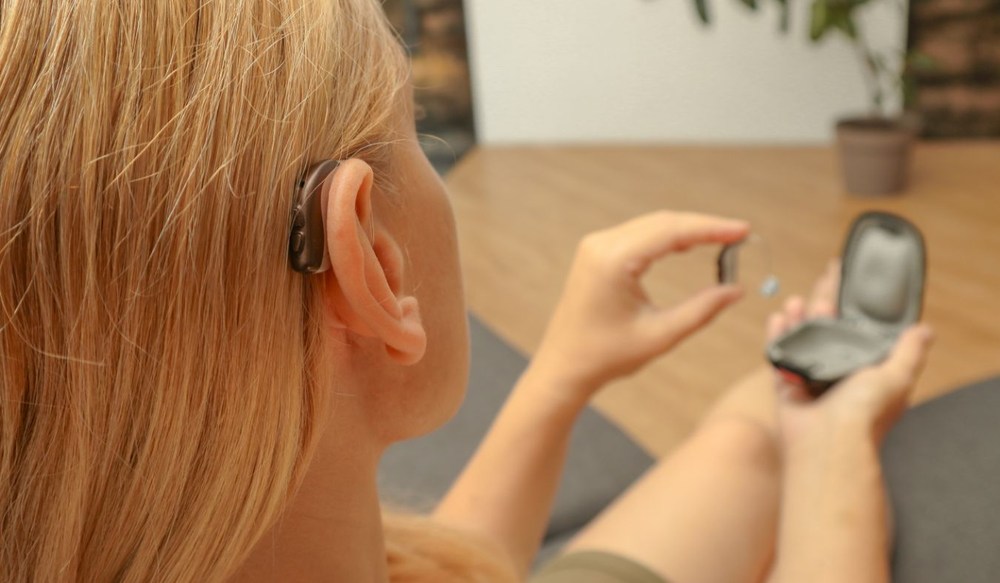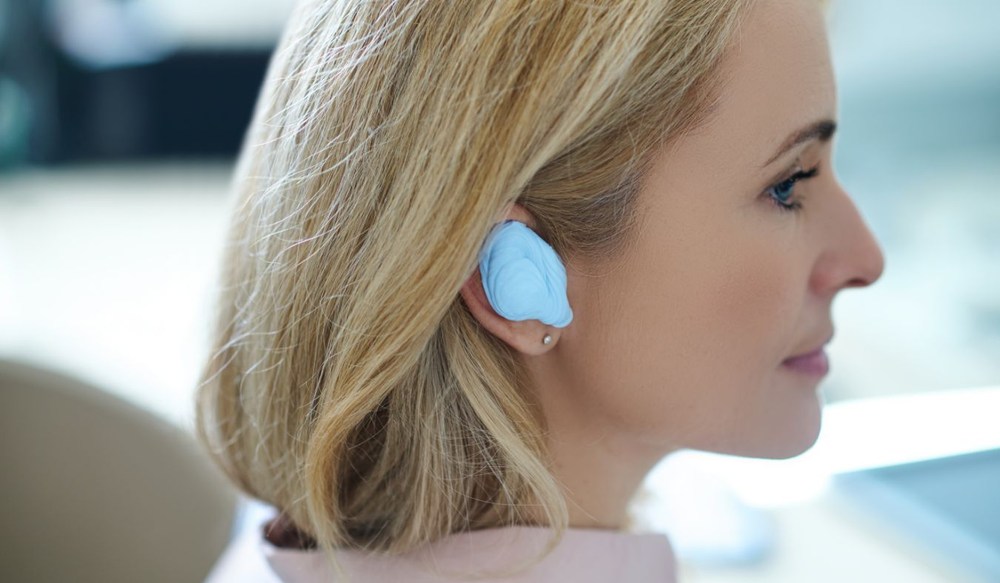The Impact of Autumn Weather on Hearing Aids
Autumn weather brings a combination of conditions that can affect your
NEW! Improve your hearing & how your brain processes sound with the new LACE AI PRO. Learn More

By: admin | July 24, 2024
Hearing loss can feel like an unexpected twist in life. Understanding its causes and effects can sometimes seem as complex as solving a puzzle. A common misconception is that a hearing test can detect earwax blockage. It’s easy to think this – both involve the ears and can affect your hearing – but the truth is a bit different. A hearing test mainly checks your auditory abilities, evaluating how well you pick up various frequencies and volumes of sound. While it doesn’t directly diagnose physical issues like earwax blockage, it can indicate potential issues.
When you arrive for a hearing test, the process usually begins with an initial consultation. The audiologist will ask you about your medical history, any hearing issues you’ve noticed and specific concerns you might have. They’ll inquire about your lifestyle, exposure to loud noises and if there’s any family history of hearing loss. This conversation helps them understand your situation and tailor the test accordingly.
Next, the specialist will conduct a visual examination of your ears using an otoscope. This device allows them to look inside your ear canal and check for any blockages, earwax buildup or physical abnormalities that could affect your hearing. This step is crucial for identifying any obvious issues that might need to be addressed before proceeding with the hearing test.
The core part of the appointment involves several different hearing tests. One of the primary tests is pure-tone audiometry, where you’ll wear headphones and listen to a series of tones at various pitches and volumes. You’ll signal whenever you hear a sound, which helps determine the quietest sounds you can hear at different frequencies. Another important test is speech audiometry, where you’ll listen to and repeat back words or sentences. This measures how well you can hear and understand speech at different volume levels. Additionally, tympanometry may be performed. This involves placing a small probe in your ear to check the movement of your eardrum, which helps detect issues like fluid in the middle ear or eardrum perforations.
After the tests are completed, the audiologist will review the results with you. They’ll explain your audiogram, which is a chart that shows the results of your hearing test, and discuss the type and degree of hearing loss, if any. This is a crucial part of the process as it helps you understand your hearing capabilities and any potential issues that were identified.
Earwax, medically known as cerumen, plays an essential role in maintaining ear health, but its impact on hearing can be significant if it accumulates excessively. Produced by glands in the ear canal, earwax serves as a natural barrier, protecting the ear from dust, foreign particles and microorganisms. Additionally, it has lubricating properties that prevent the ear canal from becoming dry and itchy.
However, when earwax builds up, it can lead to a blockage that affects hearing. This blockage often occurs when earwax is pushed deeper into the ear canal, typically from the use of cotton swabs or other objects inserted into the ear. Instead of removing earwax, these actions can compact it against the eardrum, leading to a condition known as impacted earwax.
Impacted earwax can cause a variety of hearing issues. One of the most common symptoms is a sudden or gradual decrease in hearing, often described as muffled or clogged. This occurs because the earwax obstructs the passage of sound waves to the eardrum. Additionally, impacted earwax can cause ear discomfort, a feeling of fullness in the ear, itching and even pain. In some cases, it may lead to tinnitus, a ringing or buzzing noise in the ear or vertigo, a sensation of dizziness and imbalance.
One of the most noticeable signs of earwax impaction is a sudden or gradual reduction in hearing ability. This hearing loss often presents as muffled or diminished sound quality, as the impacted earwax blocks the ear canal and prevents sound waves from reaching the eardrum effectively. Alongside hearing loss, pain or discomfort in the ear is another common symptom. This can range from mild discomfort to severe pain, depending on the extent of the impaction and any associated inflammation or infection.
Many people with earwax impaction experience a sensation of fullness or pressure in the affected ear. This feeling can be similar to the sensation experienced during altitude changes, like when flying or driving through mountains. Tinnitus, or ringing in the ears, is another sign of earwax impaction. The blockage can create a constant or intermittent ringing, buzzing or humming sound in the ear, which can be particularly bothersome in quiet environments.
In some cases, impacted earwax can affect your balance, leading to dizziness or vertigo. This occurs because the ear is not only responsible for hearing but also plays a crucial role in maintaining equilibrium. When earwax exerts pressure on the eardrum or inner ear structures, it can disrupt the balance system. Additionally, an impacted earwax blockage can cause significant itching or irritation in the ear canal. This itching can lead to a persistent urge to scratch or insert objects into the ear, which can further exacerbate the problem and potentially cause injury.
One of the primary causes of earwax impaction is the use of cotton swabs or other objects to clean the ears. While many people use these tools in an attempt to remove earwax, they often push the wax deeper into the ear canal, compacting it against the eardrum. This can lead to a blockage that affects hearing and causes discomfort.
Certain anatomical factors can also predispose individuals to earwax impaction. For instance, people with narrow or abnormally shaped ear canals are more likely to experience impactions because the earwax has a harder time moving out of the ear naturally. Similarly, those who produce an excessive amount of earwax are at a higher risk of developing impactions. This can be a hereditary trait or a response to environmental factors, like exposure to dust or debris.
Another common cause of earwax impaction is the use of hearing aids or earplugs. These devices can prevent earwax from naturally exiting the ear canal, leading to a buildup. Additionally, wearing these devices can compact the earwax further into the ear, similar to the effect of using cotton swabs.
Aging can also play a role in earwax impaction. As people age, the consistency of their earwax can change, becoming harder and more difficult to expel naturally. This makes older adults more susceptible to impactions. Additionally, reduced jaw movement, often associated with aging, can decrease the natural migration of earwax out of the ear.
Skin conditions affecting the ear canal, such as eczema or psoriasis, can also contribute to earwax impaction. These conditions can cause increased production of earwax or alter its consistency, making it more likely to build up and cause blockages. Similarly, infections or inflammation in the ear canal can lead to increased earwax production as the body attempts to protect the ear.
Finally, frequent exposure to water, like from swimming or bathing, can cause earwax to swell and become impacted. Water can mix with the earwax, causing it to expand and potentially block the ear canal. This is why swimmers often experience earwax-related issues more frequently than others.
While a hearing test is useful in evaluating your auditory capabilities, it is not designed to diagnose physical conditions like an earwax blockage or other ear-related problems.
A hearing test can indicate potential issues if you’re experiencing difficulty hearing certain frequencies or volumes. However, identifying the exact cause of these difficulties – be it an earwax blockage or something else – requires further examination by a specialist.
Keep in mind that while a hearing test provides valuable information about your auditory health, it’s just one piece of the puzzle. For comprehensive care and accurate diagnosis of any physical conditions impacting your ears or hearing abilities, trust in the expertise of your specialist.
It’s important to differentiate between symptoms of hearing loss and those of an earwax blockage. While both conditions can impact your hearing, they present unique symptoms and require different approaches for treatment.
Symptoms of hearing loss typically include difficulty understanding speech, especially in noisy environments, trouble hearing high-pitched sounds like doorbells or alarms and frequently needing to turn up the volume on devices like televisions or radios. On the other hand, an earwax blockage often presents with a feeling of fullness or pressure in the affected ear, decreased hearing on one side and sometimes ringing in the ear.
It’s important to note that while these symptoms can help guide you towards understanding what might be affecting your hearing health, they are not definitive. Both conditions can have overlapping symptoms and it’s possible to experience both at the same time. Therefore if you’re experiencing any changes in your hearing abilities or discomfort in your ears, it’s essential to consult with a specialist for a thorough examination. They can accurately diagnose your condition and provide appropriate treatment options tailored to your needs.
Regular visits to your specialist are not just about addressing immediate concerns; they’re also about preventative care.
Routine check-ups help in early detection of any potential issues that could affect your hearing. They also allow your audiologist to monitor any changes over time and adjust your treatment plan as needed. So, keep up with those regular appointments – they’re an important part of maintaining your best possible hearing health!
It’s important to understand that while some earwax is necessary for ear health, too much can lead to discomfort and even temporary hearing loss.
Firstly, resist the urge to dig out excess wax with cotton swabs or other objects. This can push the wax further into your ear canal and potentially damage your eardrum. Instead, try over-the-counter ear drops specifically designed to soften and remove excess wax.
However, if you’re experiencing severe discomfort or suspect a blockage, don’t hesitate to reach out to a specialist. They can safely remove the buildup and give you personalized advice on managing earwax at home. Remember, taking care of your ears is a key step towards maintaining optimal hearing health!
Knowing when to consult a specialist for potential earwax blockage is important. It’s not just about managing discomfort; it’s also about ensuring your ears remain healthy and your hearing stays optimal. While some earwax is necessary for maintaining the health of your ears, too much can cause problems, including temporary hearing loss.
If you’re experiencing symptoms such as a feeling of fullness or pressure in your ear, decreased hearing on one side or ringing in the affected ear, it’s time to seek professional help. Also, if over-the-counter remedies don’t seem to alleviate discomfort caused by excessive wax, this is another signal that you should consult with a specialist. Let’s take a closer look at some key signs that you should schedule an appointment:
At Innovative Hearing Care located at Riverside CA, we believe in personalized care tailored to each individual’s needs. Our team is ready to guide you through every step of your journey towards optimal auditory health. For more information or to schedule an appointment at our Riverside, CA location, please give us a call at (951) 291-9081. We look forward to partnering with you on this important aspect of overall wellness – because every sound matters!

Autumn weather brings a combination of conditions that can affect your
By: admin | November 18, 2025

Warm weather brings out activities that can put your hearing at risk in
By: admin | September 24, 2025

Your hearing aids are important tools that help you stay connected to
By: admin | May 23, 2025
